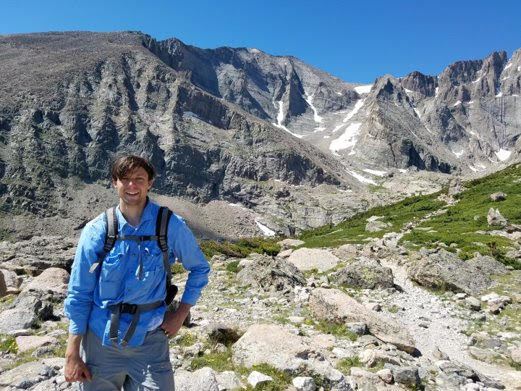***Please note venue change***
Old Rocks, New Ways: Recent insights from the lower Paleozoic of Far West Texas and southeastern New Mexico
Andy Roark, 2021-22 WTGS First Vice President and Field Trip Chair
Outcrops of the Ordovician through Devonian in the Franklin, Organ, and Sacramento Mountains are uniquely pristine analogs for subsurface conventional, unconventional, and saltwater disposal reservoirs. Age-equivalent rocks to the subsurface Woodford, Wristen Group, Montoya, Fusselman, and Ellenburger zones are nearly identical in thickness and lithology to their basinal counterparts. Yet, these exposures have received relatively little research attention in recent years. This talk presents a suite of newly-collected data covering these formations. These data were collected as part of extensive preparation and revamping of legacy technical material for the 2022 WTGS Spring Field Trip.
Spectral gamma ray and geomechanical (Leeb rebound) profiles of the type section of the Fussleman and Montoya Groups in the Northern Franklin Mountains, and of the stratigraphically-equivalent section at Alamo Canyon, show strong correspondence to depositional facies and formation/sequence stratigraphic boundaries. These signatures provide a basis for extending the outcrop mapped stratigraphic framework and associated reservoir properties into the subsurface using common gamma ray/porosity log datasets. Without outcrop calibration, identification of these trends in log data alone is difficult or impossible. Separately, strike, dip, and aperture measurements of three-dimensional fracture networks exposed in shallow, abandoned fluorite mining excavations at Bishop Cap reveal unambiguous timing relationships to regional tectonic episodes. These fracture sets likely share origins with similarly oriented sets identified in Permian Basin subsurface image logs. Understanding these features and the relationship to present-day stresses is critical for assessing operational risks. This new information demonstrates the continued relevance of outcrop studies to resolving current industry problems.

Bio:
- BS Geology University of Alabama/ M.Sc. Geology Texas A&M University
- Started with Chevron in 2015 working shale and tight exploration in Oklahoma
- Worked regional Permian Basin exploration from 2016 to 2017 in both the Midland and Delaware Basin
- Currently a development geologist focused on Chevron’s western Delaware Basin assets
- Teach internal-Chevron core workshop classes focused on Permian Basin unconventional reservoirs
- 2021-22 WTGS First Vice President and Field Trip Chair